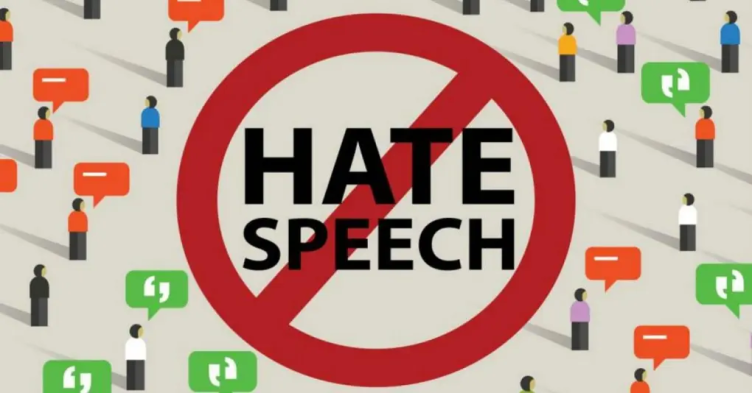Exploring the Boundaries: Assessing ‘Hate Speech’ in Indian Fiction and Art
Taarkik Legal
In the realm of creative expression, the question often arises whether a work of fiction or art can be considered ‘hate speech’ within the legal framework of India.
Understanding Hate Speech
Before delving into the legal aspects, it is crucial to establish a clear understanding of hate speech. Hate speech generally refers to any form of expression that promotes discrimination, hostility, or violence against individuals or groups based on attributes such as race, religion, ethnicity, nationality, gender, or sexual orientation. It encompasses speech, writings, images, or any other medium used to disseminate such harmful messages.

The Impact of Hate Speech
Hate speech has severe consequences on individuals and society as a whole. It can contribute to the spread of prejudice, discrimination, and violence. Victims of hate speech often experience emotional distress, reduced self-esteem, and a sense of alienation. Furthermore, hate speech undermines social cohesion, impeding progress towards a more inclusive and harmonious society.
The Role of Art and Fiction
The Power of Artistic Expression
Art and fiction hold immense power to provoke emotions, challenge norms, and offer social commentary. Throughout history, artists and writers have used their creations to reflect the human experience, explore controversial themes, and stimulate critical thinking. They often aim to shed light on societal issues, including hate and discrimination, by portraying them in thought-provoking ways.
Interpretation and Subjectivity
One of the complexities surrounding art and fiction is the subjective nature of interpretation. Different individuals may perceive and understand the same work in contrasting ways. While the creator may have intended to convey a particular message or critique, it is essential to consider that art is open to individual interpretation. However, this subjectivity also means that hate speech within art can be similarly interpreted, raising ethical questions.
Legal Framework in India
India, as a democratic nation, upholds the principles of freedom of speech and expression. However, these freedoms are not absolute and are subject to reasonable restrictions in the interest of public order, morality, and the integrity of the nation. Hate speech falls under these restrictions, as it has the potential to incite violence, disrupt social harmony, and undermine the fabric of society.
Section 153A of the Indian Penal Code
Section 153A of the Indian Penal Code (IPC) specifically addresses hate speech. It prohibits any act that promotes enmity between different religious, racial, or linguistic groups and is likely to disturb public tranquility. The section penalizes individuals who engage in activities intended to incite hatred or create a sense of insecurity among these groups. The scope of Section 153A extends to both spoken and written words, as well as visual representations.
Section 295A of the Indian Penal Code
Another relevant provision in the IPC is Section 295A, which deals with acts that outrage religious sentiments. It prohibits deliberate and malicious acts, including the creation, publication, or circulation of any material that insults or intends to insult religious beliefs or religious feelings. This section aims to maintain communal harmony and prevent the promotion of enmity between religious groups.
Artistic Freedom vs. Hate Speech
Artistic expression often pushes boundaries, challenging societal norms and conventions. However, when artistic works incorporate elements that may be perceived as hate speech, a delicate balance must be struck between artistic freedom and social responsibility. The evaluation of whether a particular work constitutes hate speech depends on various factors, including the intention behind the creation, the context in which it is presented, and its potential impact on society.
Case Studies
To better understand the application of hate speech laws in relation to artistic works, let’s examine a few notable case studies from India.
The MF Hussain Controversy
Renowned artist, MF Hussain, faced severe backlash and legal challenges for his paintings depicting Hindu deities in a provocative manner. These works were accused of hurting religious sentiments and inciting communal tension. The controversy surrounding Hussain’s art highlights the tension between artistic freedom and religious sensitivities in India.
The Perumal Murugan Case
Author Perumal Murugan’s novel, ‘One Part Woman,’ sparked a heated debate about artistic freedom and cultural sensitivities. The book, set in a fictional village, explores the struggles faced by a couple trying to conceive a child. However, certain sections of society claimed that the book portrayed a specific community in a derogatory light, leading to protests and demands for a ban. The case raised important questions about the boundaries of artistic expression and the potential implications of subjective interpretations.
Balancing Freedom and Responsibility
The Indian legal system recognizes the importance of protecting artistic freedom while ensuring that hate speech is curbed. Determining whether a work of fiction or art crosses the line into hate speech requires a careful examination of the content, intent, and impact of the work. It is crucial to strike a balance that respects both the artist’s creative expression and the preservation of social harmony.
The Right to Artistic Freedom
Artistic freedom is a fundamental human right, allowing creators to express their ideas and opinions freely. It is crucial to protect this right as it fosters cultural diversity, stimulates creativity, and encourages societal progress. Artists should be able to explore controversial themes and challenge the status quo through their work.
The Ethical Responsibility of Creators
While artistic freedom is paramount, creators also have an ethical responsibility towards their audience and society. They should consider the potential impact of their work, especially when addressing sensitive topics like hate speech. Artists must find a balance between pushing boundaries and ensuring that their creations do not perpetuate harm or incite violence.
Evaluating the Context
Cultural and Historical Relevance
When assessing whether a work of fiction or art constitutes hate speech, it is crucial to consider the broader cultural and historical context in which it was created. Some works may aim to depict or critique hate speech itself, shedding light on its destructive nature. Understanding the intentions and the societal environment at the time of creation helps in interpreting the work’s message accurately.
Intention vs. Impact
Distinguishing between the creator’s intention and the actual impact of a work is vital. While an artist might have intended to convey a powerful message against hate speech, if the work is misinterpreted or has unintended consequences, it may still perpetuate harmful narratives. This complexity emphasizes the need for dialogue and critical analysis when examining potentially controversial works.
Addressing Hate Speech in Art and Fiction
Constructive Dialogue and Education
Promoting dialogue and education is crucial in addressing hate speech within art and fiction. By fostering discussions about the underlying themes and intentions, society can develop a more nuanced understanding of complex works. This approach encourages critical thinking and empowers individuals to form their opinions based on informed perspectives.
Self-Regulation and Community Standards
Creators and artistic communities can also play a role in self-regulating their work. By establishing guidelines and ethical standards, they can ensure that their creations remain within acceptable boundaries. Peer review, professional organizations, and collaboration with relevant stakeholders can help in creating an environment that encourages responsible artistic expression.
Conclusion
Art and fiction have the power to shape society and challenge prevailing norms. However, whether a work of fiction or art constitutes hate speech is a multifaceted one. Balancing artistic freedom with ethical responsibility is crucial in navigating this complex landscape. By considering the cultural context, intention versus impact, and promoting constructive dialogue, we can better understand and address the potential harm caused by hate speech while preserving the essence of artistic expression.
Navigating the complex terrain of hate speech and artistic freedom is a challenging task, particularly in a diverse and multicultural country like India. The legal framework in India aims to strike a balance between safeguarding freedom of speech and expression while preventing the spread of hatred and intolerance. As society evolves, it becomes imperative to foster a nuanced understanding of these issues, recognizing the inherent complexities involved. By doing so, we can create an environment where creativity thrives while upholding the principles of equality, harmony, and respect for all.
Remember, artistic freedom and responsible creation are not mutually exclusive. It is through open conversations and collective efforts that we can foster a society where creativity thrives while combating hate speech effectively.
